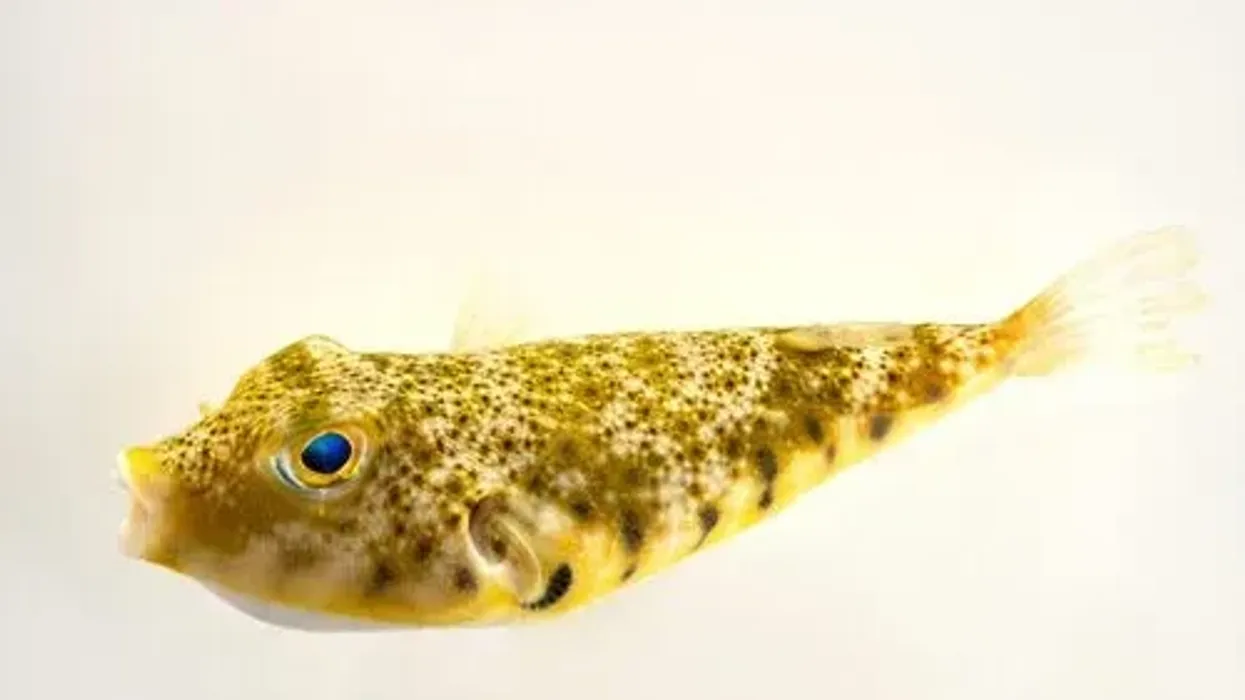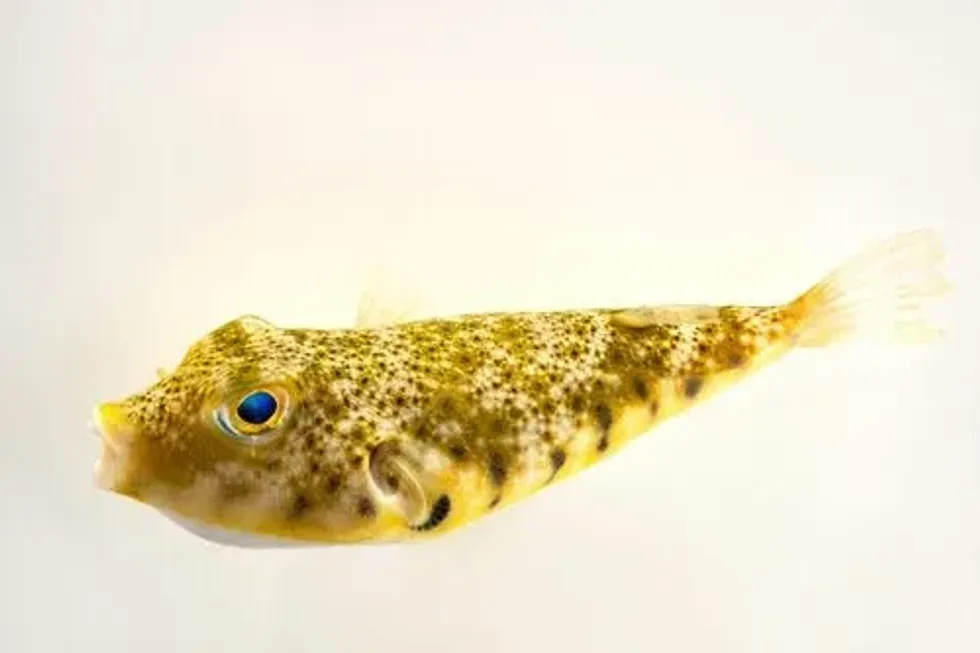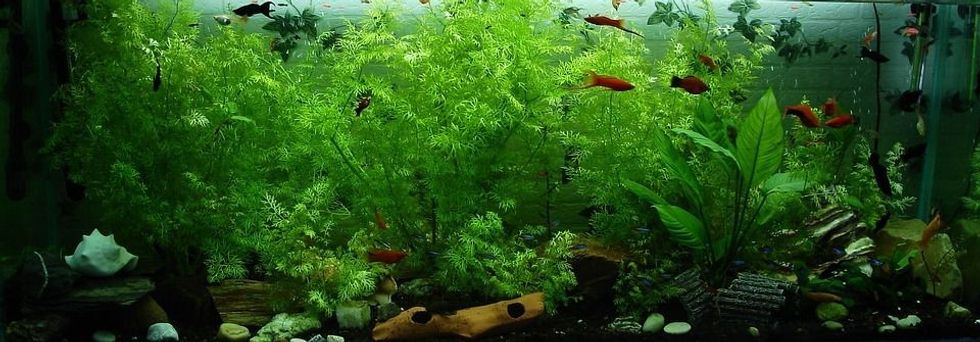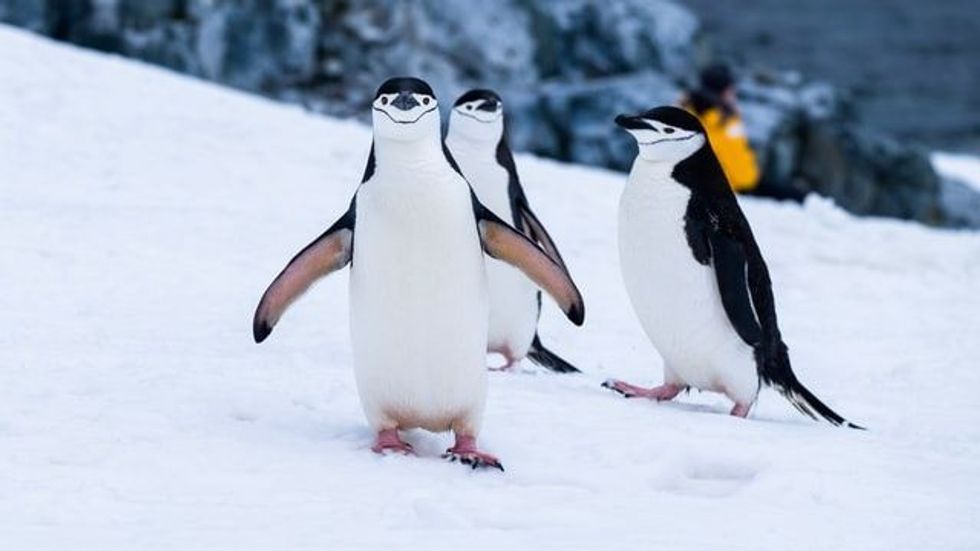The northern puffer is a pufferfish native to the North American continent, mainly the eastern coastal waters of the USA and Canada. The habitat range of the species runs from Florida to Newfoundland.
It inhabits sandy bottoms at depths of 33–600 ft (10-183 m). The northern puffer species are often seen in large unorganized aggregations.
Like other pufferfish, it can puff up or balloon its body with water to defend itself from predators. It is however known as a non-poisonous pufferfish, containing almost no toxins in its flesh. It is very popular as an eating fish for this reason.
It is a yellow-white and brown (or olive) colored fish with black spots and bars that is spiky and sandpapery. It is also known as the sea squab and the sugar toad.
The northern puffer spawn during the months of May-August and the fertilization is external. It is classified as species of 'Least Concern' by the IUCN but shows a declining population trend.
For more relatable content, check out these reef shark facts and porbeagle shark facts for kids.
Northern Puffer Interesting Facts
What type of animal is a northern puffer?
The northern puffer (Sphoeroides maculatus) is a fish.
What class of animal does a northern puffer belong to?
The northern puffer (Sphoeroides maculatus) species belongs to the 'Actinopterygii' (ray-finned fish) class of animals.
How many northern puffers are there in the world?
The exact number of northern puffers in the world is unknown.
Where does a northern puffer live?
The northern puffer (Sphoeroides maculatus) species is found along the eastern coastal waters of the continent of North America. The habitat map ranges from Florida in the USA to Newfoundland in Canada. Cape Cod in Massachusetts also sees quite a few northern puffers.
What is a northern puffer's habitat?
Northern puffers are found in a habitat of coastal waters near the sandy bottoms of the sea and seagrass. They occur in bays, estuaries, and offshore waters. Northern puffers are found living at depths of 33–600 ft (10-183 m).
Whom do northern puffers live with?
Northern puffers are not known as schooling fish, but they are seen in aggregations that are large and disorganized.
How long does a northern puffer live?
Northern puffers may live for close to 10 years in wild waters like most pufferfish. They have a generation length of 1.8 years.
How do they reproduce?
Northern puffers reproduce via external fertilization.
Sexual maturity is attained by northern puffers between the ages of 1-2 years. They spawn near shallow waters close to the shore, usually during the warmer months of May-August. Adhesive eggs are laid by females which attach themselves to the muddy and sandy bottom. These eggs are fertilized and then guarded by the males.
What is their conservation status?
The conservation status of the northern puffer species according to the International Union for Conservation of Nature is 'Least Concern'.
Northern Puffer Fun Facts
What do northern puffers look like?
The northern puffer is a small or medium-sized, club-faced fish. The adult has small spines on its entire body and a small beak-like mouth. The back is grayish-brown or olive and the upper side is yellow-white, on the sides and the belly.
There are tiny black spots all over its body, especially the cheeks. On the lower sides of the northern puffer, there are 7-10 vertical black bars.
The prickles on the head and the body give the skin a sandpapery texture. The tail also has a small dorsal fin near it. The northern puffer also has two teeth each in the lower and upper jaws.
They use these teeth to crush their prey. Both dorsal and anal fins are close to the caudal fin.
The dorsal fin has eight soft rays, the anal fin has seven soft rays, and the pectoral fins have 16 rays. There are no spines on the anal and dorsal fins. There are no lappets present on the head or body.
Being a pufferfish, the northern puffer species is capable of inflating its body with water in presence of a predator. When taken out of the water, its body puffs up with air. A special chamber near the stomach enables this function.

How cute are they?
Northern puffers or sugar toads are not particularly cute animals. They are often seen with bloated bellies and they have beak-like mouths, neither of which adds much to their appearance.
The earthy brown or olive and yellow-white colors and the black spots are not especially pleasing to the eye. They do have some aesthetic appeal with the bars on the lower sides. They are however a whimsical, funny-looking fish with small, outward-pointing mouths.
How do they communicate?
Like other pufferfish, northern puffers communicate by making sounds with their teeth. They also use the vibrations of the swim bladder. They 'communicate' with predators by inflating their bodies by drawing in water, to look unappetizing.
How big is a northern puffer?
Northern puffers grow to be 8-10 in (20.3-25.4 cm) in length usually but puffers as big as 14 in (35.6 cm) have also been observed. This makes them 5-9 times bigger than the neon tetras and 3-5 times bigger than the Congo tetras.
How fast can a northern puffer swim?
It is unclear how fast a northern puffer can swim, but it is a clumsy and inefficient swimmer. It moves by swinging its tail fin back and forth, much like a paddle.
How much does a northern puffer weigh?
The northern puffer on average weighs about 1.5 lb (680.4 g).
What are the male and female names of the species?
There are no specific male and female names for the northern puffer species.
What would you call a baby northern puffer?
A baby northern puffer would be called a fry, fingerling, or juvenile before becoming an adult.
What do they eat?
The northern puffer diet consists of shellfish, finfish, blue crabs, mussels, clams, shrimp, sea urchins, worms, sponges, sea squirts, and sea plants.
They themselves get preyed upon by lizardfish and sharks, particularly tiger sharks.
Are they poisonous?
Unlike most other pufferfish, northern puffers are not considered to be dangerous. They are not poisonous and are a common eating fish, sold as 'sea squab'. There may be low levels of toxins in its viscera, which is why it is advisable to clean the fish properly before preparation and eating.
Would they make a good pet?
A northern puffer may make a good pet like other pufferfish, but it is more famous as an eating fish. And for a northern puffer, aquarium settings are difficult to maintain, mainly with their diet, since it has to contain a lot of hard foods.
Did you know...
Pufferfish in general live for around 10 years. The most special thing about pufferfish is their ability to inflate their bodies like balloons when they sense threats from predators. Their bodies (except the northern puffer) contain tetrodotoxin which makes them poisonous to eat and touch.
In the Chesapeake Bay, northern puffers are a delicacy. They are known as 'chicken of the sea' or 'blowfish' there.
If a puffer is taken out of its water habitat it fills up with air, but when thrown back in the water, it floats downside up, deflates, and swims away.
Hook and line fishing is most suitable when looking for northern puffers. Fishing can be done from boats, jetties, and even piers close to shore. Squid, shrimp, and bloodworms prove to be adequate hook bait.
Is the northern puffer poisonous?
The northern puffer or sea squab is not poisonous which distinguishes it from other pufferfish. There may be low levels of toxins in its viscera, but its flesh does not contain toxins.
Can touching a puffer kill you?
Yes, touching a puffer can prove very dangerous to humans. Most pufferfish contain tetrodotoxin across their bodies which makes them dangerous to touch or eat.
The northern puffer description does not include this warning since it does not contain toxins like other puffers.
Here at Kidadl, we have carefully created lots of interesting family-friendly animal facts for everyone to discover! For more relatable content, check out these blue catfish fun facts and herring fun facts for kids pages.
You can even occupy yourself at home by coloring in one of our free printable regal angelfish coloring pages.








